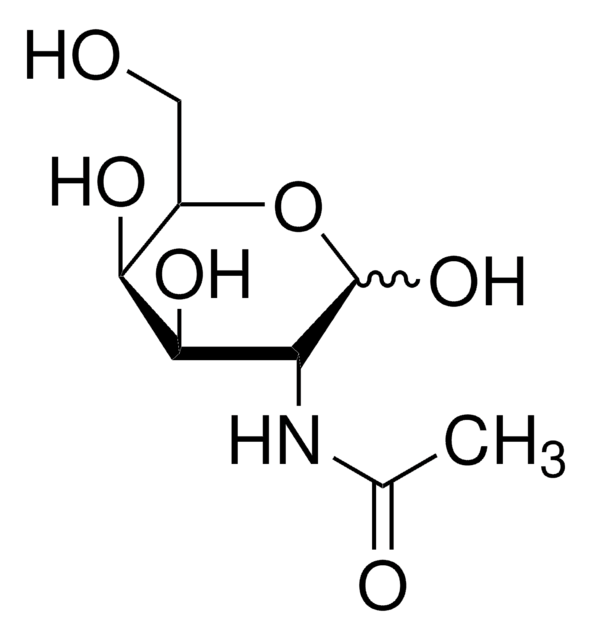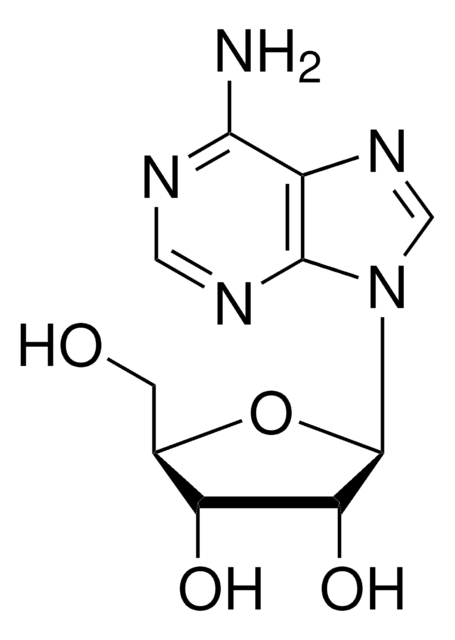A9165
N-Acetyl-L-cysteine
≥99% (TLC), suitable for cell culture, BioReagent
Synonym(s):
LNAC, NAC
About This Item
Recommended Products
product name
N-Acetyl-L-cysteine, BioReagent, suitable for cell culture
product line
BioReagent
Quality Level
Assay
≥99% (TLC)
form
powder
technique(s)
cell culture | mammalian: suitable
color
white to off-white
mp
106-108 °C (lit.)
solubility
H2O: 100 mg/mL (with heating)
storage temp.
2-8°C
SMILES string
CC(=O)N[C@@H](CS)C(O)=O
InChI
1S/C5H9NO3S/c1-3(7)6-4(2-10)5(8)9/h4,10H,2H2,1H3,(H,6,7)(H,8,9)/t4-/m0/s1
InChI key
PWKSKIMOESPYIA-BYPYZUCNSA-N
Looking for similar products? Visit Product Comparison Guide
Application
Biochem/physiol Actions
Application
also commonly purchased with this product
Signal Word
Warning
Hazard Statements
Precautionary Statements
Hazard Classifications
Eye Irrit. 2
Storage Class Code
13 - Non Combustible Solids
WGK
WGK 2
Flash Point(F)
Not applicable
Flash Point(C)
Not applicable
Personal Protective Equipment
Certificates of Analysis (COA)
Search for Certificates of Analysis (COA) by entering the products Lot/Batch Number. Lot and Batch Numbers can be found on a product’s label following the words ‘Lot’ or ‘Batch’.
Already Own This Product?
Find documentation for the products that you have recently purchased in the Document Library.
Customers Also Viewed
Articles
Oxidative stress is mediated, in part, by reactive oxygen species produced by multiple cellular processes and controlled by cellular antioxidant mechanisms such as enzymatic scavengers or antioxidant modulators. Free radicals, such as reactive oxygen species, cause cellular damage via cellular.
Antioxidants protect biological systems from oxidative damage produced by oxygen-containing free radicals and from redoxactive transition metal ions such as iron, copper, and cadmium.
Chromatograms
application for HPLCOur team of scientists has experience in all areas of research including Life Science, Material Science, Chemical Synthesis, Chromatography, Analytical and many others.
Contact Technical Service



![[Leu15]-Gastrin I human ≥95% (HPLC)](/deepweb/assets/sigmaaldrich/product/structures/153/342/d4cb3dd7-13f1-46cf-8d1f-3907a5de7a83/640/d4cb3dd7-13f1-46cf-8d1f-3907a5de7a83.png)




